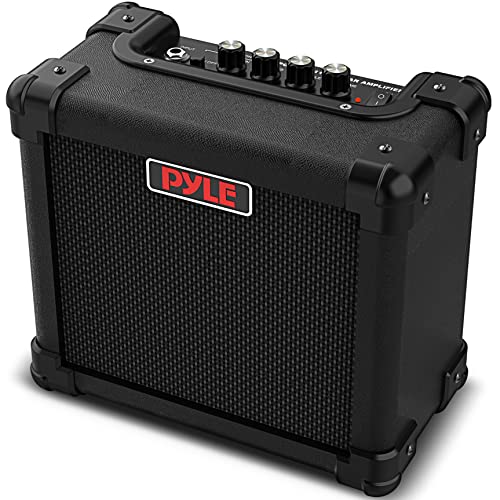Timbre Wolf
Well-known member
Glad you’ve jumped in here, Rob. Yes, I’m still “evangelizing,” mostly because I can’t contain my enthusiasm on this topic. Sorry to hear your Triaxis is still acting up, mate. Gotta get over that soon!
Hey, you know, your comment about enjoying GAIN got me thinking that I do too, for certain situations. I think I may have misrepresented the advantages of some tube choices, particularly the Mullard CV4024. You can have this lower-mu valve in the input and still get nice singing, fluid, high gain out of both Lead 1 and Lead 2. The key difference is that it is easier to get cleaner rhythm/clean mode settings, and the clean-to-overdriven range in the lead modes is broader. Honestly, I don’t think you could get a better smooth, creamy, and soaring sound out of the Triaxis than in Lead 2 Green, with a Mullard CV4024 in V2 and a long plate/halo-getter Mullard ECC83 in V4: it is pure, joyous, heaven! Doesn’t matter what style music you play. Cranking a nice power amp (I love my Mesa 20/20 with Tungsram EL84s) through AlNiCo speakers (I run stereo through two Mesa wide-body 1x12’s with a Weber Blue Dog in one and a Silver Bell in the other) helps too, by the way.
I’m going to make some concluding remarks about this tube-tasting foolishness, and then I’ll get off my soapbox. I would like to suggest changing the phrase “trial and error” to “trial and success,” because I’ve really improved my own satisfaction level during this process. I thoroughly love how my Triaxis-20/20 system has gained character, expressiveness, tone and feel (my rack system now feels as responsive as an integrated combo amp, but is infinitely more variable), and that inspires me to be a better player. Here are my main discoveries:
1) Subjectivity rules - only you know what you like, and there is no objective "best" tube; only a cast of characters.
2) Tubes favored in one amp/preamp are often not favored in another amp/preamp. This also goes for different players.
3) Combinations of tubes in a circuit bring in a complexity that may cause you to favor different tubes than you would expect if you simply considered each valve separately.
4) It really helps to have a variety of choices with which to experiment. Warning: this may be expensive!!
5) Wow – it’s FUN!
Summary of Triaxis Tube Choices (for my little piece of sonic nirvana):
V1 Raytheon long black plate, halo-getter12AX7
V2 Mullard CV4024/12AT7WA (654 type, ’70’s-‘80’s production)
V3 RCA 5751 black plate/3-mica
V4 Mullard long plate/halo getter ECC83 (f91 and f92 types, late ‘50’s production)
V5 RCA black plate 12BZ7
Rock on, y’all…
- T
Hey, you know, your comment about enjoying GAIN got me thinking that I do too, for certain situations. I think I may have misrepresented the advantages of some tube choices, particularly the Mullard CV4024. You can have this lower-mu valve in the input and still get nice singing, fluid, high gain out of both Lead 1 and Lead 2. The key difference is that it is easier to get cleaner rhythm/clean mode settings, and the clean-to-overdriven range in the lead modes is broader. Honestly, I don’t think you could get a better smooth, creamy, and soaring sound out of the Triaxis than in Lead 2 Green, with a Mullard CV4024 in V2 and a long plate/halo-getter Mullard ECC83 in V4: it is pure, joyous, heaven! Doesn’t matter what style music you play. Cranking a nice power amp (I love my Mesa 20/20 with Tungsram EL84s) through AlNiCo speakers (I run stereo through two Mesa wide-body 1x12’s with a Weber Blue Dog in one and a Silver Bell in the other) helps too, by the way.
I’m going to make some concluding remarks about this tube-tasting foolishness, and then I’ll get off my soapbox. I would like to suggest changing the phrase “trial and error” to “trial and success,” because I’ve really improved my own satisfaction level during this process. I thoroughly love how my Triaxis-20/20 system has gained character, expressiveness, tone and feel (my rack system now feels as responsive as an integrated combo amp, but is infinitely more variable), and that inspires me to be a better player. Here are my main discoveries:
1) Subjectivity rules - only you know what you like, and there is no objective "best" tube; only a cast of characters.
2) Tubes favored in one amp/preamp are often not favored in another amp/preamp. This also goes for different players.
3) Combinations of tubes in a circuit bring in a complexity that may cause you to favor different tubes than you would expect if you simply considered each valve separately.
4) It really helps to have a variety of choices with which to experiment. Warning: this may be expensive!!
5) Wow – it’s FUN!
Summary of Triaxis Tube Choices (for my little piece of sonic nirvana):
V1 Raytheon long black plate, halo-getter12AX7
V2 Mullard CV4024/12AT7WA (654 type, ’70’s-‘80’s production)
V3 RCA 5751 black plate/3-mica
V4 Mullard long plate/halo getter ECC83 (f91 and f92 types, late ‘50’s production)
V5 RCA black plate 12BZ7
Rock on, y’all…
- T




















